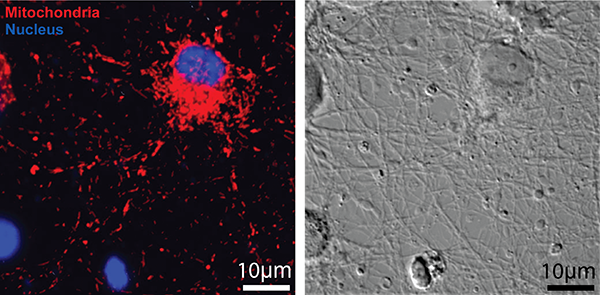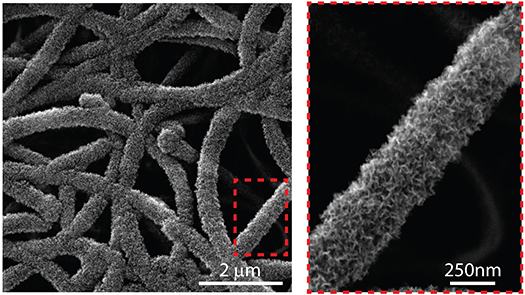Graphene is the future of nanotechnology
Graphene has been hailed by many as the “wonder material” of the 21st century, especially for nanotechnology applications. But questions remain: is graphene toxic to the human body? Will graphene remain flat, or is it possible to form it into 3-D shapes? Carnegie Mellon researchers recently published insights to both questions.
Graphene has been hailed by many as the “wonder material” of the 21st century. The carbon-based material is nearly 200 times stronger than steel, flexible, nearly transparent, and highly conductive to heat and electricity. Since graphene is just a single layer of carbon atoms connected in a hexagonal pattern, it is also extremely thin and lightweight, and therefore an attractive material for nanotechnology applications.
But questions remain: is graphene toxic to the human body? Will graphene remain flat, or is it possible to form it into 3-D shapes? Researchers in Carnegie Mellon’s College of Engineering recently published insights to both questions.
Is graphene toxic to the human body?
Graphene has the potential to take off in the field of biomedical research as an ideal material to build medical devices that interact with cells. However, a missing piece of the puzzle has held researchers back from fully embracing it.
“Graphene is great, but what if it is toxic to cells?” asks Ge Yang, associate professor of biomedical engineering (BME) and computational biology. “This has been an important question since researchers began exploring graphene, because work in the lab can’t translate into clinical applications if the materials we are using are harmful to the human body.
For Yang, graphene is an attractive material to create devices to interface with neurons in the brain. Yang, who studies material transport in neurons, is working to better understand our brains on the cellular level in order to improve treatment of neurodegenerative diseases.
“The potential of using graphene to build devices that interact with neurons is amazing because of all of the interesting traits of the material,” explains Yang. “The transparency allows you to shine lights through the graphene so that you can use optics to visualize and control chemical signals inside the cell. And because graphene is incredibly conductive, you can simultaneously do sensitive recordings of electrical signals of the neurons—often called electrophysiological recordings.”
Work in the lab can’t translate into clinical applications if the materials we are using are harmful to the human body.
Ge Yang, Associate Professor, Biomedical Engineering & Computational Biology, Carnegie Mellon University
So, Yang joined forces with BME/MSE’s Assistant Professor Tzahi Cohen-Karni to answer the important question—is graphene toxic to the human body? The team studied both neurons and non-neuronal cells to understand their reaction to graphene. Although other studies have explored this question before, Yang and Cohen-Karni’s was the first to address this question under real-life physiological conditions using two reliable and sensitive indicators of toxicity and stress. These indicators, mitochondria and autophagosomes, are found within the cell.
Yang and Cohen-Karni found that graphene is not only safe for neurons and non-neuronal cells, but that it also has long-term biocompatibility—making it an excellent material to use in devices that interface with the nervous system. This new finding means that the research team can begin to use graphene for interfacing with different types of tissues to better understand cell physiology and to create novel nanodevices for biomedical applications.
Is it possible to grow graphene into 3-D shapes?
One of the main features of graphene attracting the attention of technologists is its impressive ability to store electric charge—its capacitance. This feature is largely derived from graphene’s very high amount of surface area relative to its volume.
“Until this study, all of the graphene that people have grown are pinned to a surface—it exposes 2-D topology, and you don’t get the advantage of high surface-to-volume ratio that one could achieve if it were grown in 3-D,” says Cohen-Karni. “High surface-to-volume is necessary to make thin-film supercapacitors that can be used in miniaturized circuits.”
Supercapacitors are devices that are able to store and deliver electric charge much, much faster than batteries.
“Imagine a self-sustained system, where the power is supplied to the nanosensing unit from 3-D graphene-based super capacitors,” Cohen-Karni explains. “Someday we could have sensors that measure hormone or toxin levels, and you’d never have to replace the battery.”
Cohen-Karni’s team was successful in growing graphene in 3-D by first creating a mesh of nanowires made of silicon, which acted as a surface for the graphene to grow on. Then, the team exposed the mesh to methane plasma, which resulted in carbon separating from the methane and depositing onto the mesh, forming graphene.
After trying various levels of methane plasma and letting the mesh “cook” for various lengths of time, Cohen-Karni’s team began to see tiny flakes or “fuzz” of graphene growing off the surface of the silicon nanowires. Indeed, the graphene was growing in three dimensions and not just along a surface like previous studies had been able to achieve.
“Throughout the course of one of these synthesis experiments, first you see nothing, then you see some flakes, and then you see the flakes start growing, and then you see the flakes grow like crazy as you extend the time,” Cohen-Karni says.
Moving forward, Cohen-Karni’s team will work to gain more control of the structure of the graphene “fuzz,” as well as its chemical nature to increase its capacitance, potentially leading to even more advanced sensors.


